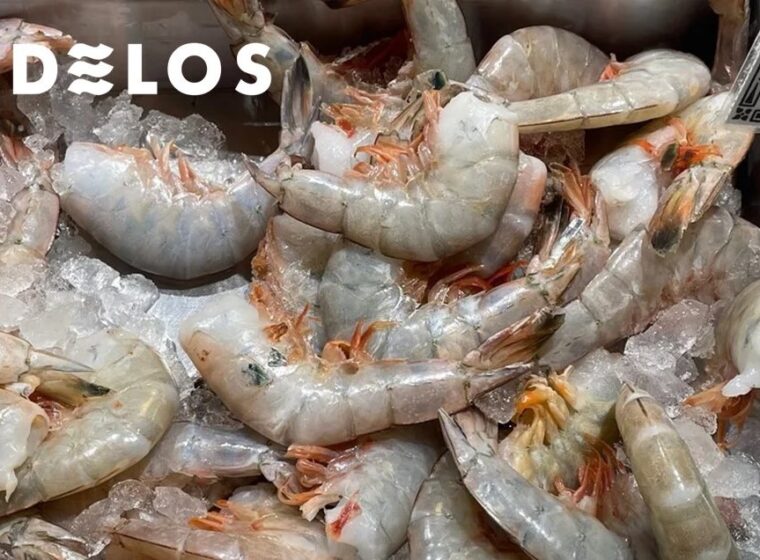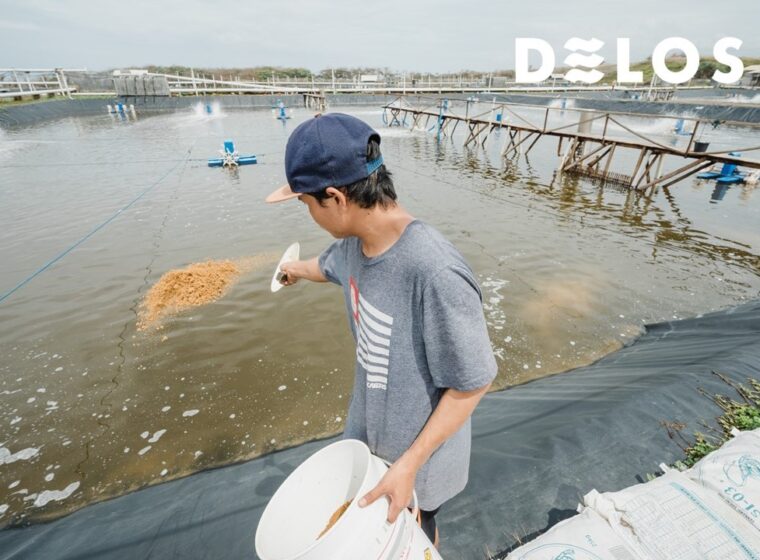As a type of crustacean, vannamei shrimp must experience a period of molting or the release of their outer skeleton. Molting can occur several times throughout the shrimp’s life and growth. So, how do you speed up the molting period for vannamei shrimp?
Molting in vannamei shrimp is a hormonal phenomenon that occurs as it grows. The molting process occurs because the shrimp experience an increase in body volume, while the exoskeleton cannot increase in size due to its rigid nature.
The process of molting in shrimp can fail, which can cause death in shrimp. This is what makes the farmers must know how to improve the quality of the pond environment to expedite and accelerate the molting period in shrimp.
Also Read: This is the Process of Molting in Shrimp and How to Handle It
Molting Stages in Vannamei Shrimp
1. Pre-molt
Shrimp usually pass the first molting phase by preparing its body to release the carapace or outer shell of the shrimp. Usually, the shrimp’s appetite will decrease, and the cuticle layer will begin to grow.
2. Inter-molt
The intermolt phase is the stationary phase where the shrimp cuticle begins to harden. Shrimp mass growth also runs continuously, and their feeding activity is stable or reaches a maximum level.
3. Post-molt
In this phase, the shrimp recover from their previous molt. To strengthen the cuticles and adapt them to their new size, vannamei shrimp will absorb a large volume of water with a high mineral content. The new carapace will harden in a few hours.
Also Read: Do These 5 Things For Successful Vannamei Shrimp Cultivation
Molting Phase Vulnerable to Disease
Molting significantly disrupts the shrimp’s body as it needs time to recover after the molting phase. The cuticle is not yet fully functional, so the shrimp must mobilize its body reserves to harden the weak cuticle.
Shrimp, including the White Spot Syndrome Virus (WSS), are susceptible to diseases in this phase. This makes the farmers must always be aware of the various possibilities that will be faced during the shrimp molting phase.
How to Speed Up Shrimp Molting
Although molting is a natural process in the shrimp body, many possibilities can occur during this phase. If the molting process fails, the worst impact that can happen is the death of the shrimp. In addition, other effects can be shrinking the shrimp’s body and slowing its growth.
Basically, the molting process in shrimp cannot be accelerated, considering that this process occurs naturally and is hormonal. However, farmers can expedite the molting process in the following ways.
1. Ensure Shrimp Are Not Stressed
The first way to speed up molting is to keep the shrimp from getting stressed. If the shrimp experience stress, their growth will be hampered, and the disease risk will increase.
Several factors that can cause stress to shrimp include extreme and too fast changes in water quality parameters and poor feed quality.
For the molting process of the shrimp to run smoothly, the farmers must always check the water quality parameters regularly, ensure that they are always in optimal condition, and ensure the feed given to the shrimp is of high quality and has sufficient nutrition.
2. Check Shrimp Conditions Routinely
To ensure that the molting of the shrimp runs smoothly, use pond sampling techniques and carry out periodic inspections to monitor the progress of the molting process.
Check whether the shrimp shell or carapace has begun to harden or has been released. By checking the condition of the shrimp regularly, farmers can evaluate whether the molting is running smoothly and whether the growth of the shrimp is normal or not.
3. Adjust the Amount of Feed with the Molting Stage
By conducting sampling for routine inspection, farmers can find the stages of shrimp molting so that the amount of feed given can be adjusted according to the stages.
For example, in the pre-molt stage, shrimp tend to eat less. Meanwhile, at the inter-molt stage, shrimp feeding activity peaks, meaning farmers must provide a more significant portion of feed than usual.
Adjusting the amount of feed at the vannamei shrimp molting stage can help keep the shrimp healthy and grow more optimally.
4. Provide Additional Nutrition for Shrimp
Providing additional nutrition for molting shrimp, such as calcium and phosphorus, has a good effect on shrimp for the growth of new shells. This extra nutrition can be in the form of feed nutrition or directly into pond water.
In addition, providing additional essential minerals, protein, and other nutrients to shrimp feed and pond water can also help expedite the shrimp molting process.
Vannamei Shrimp Cultivation is More Productive with DELOS
Molting is a natural process in shrimp that basically cannot be accelerated. However, farmers can try to expedite the molting process to prevent molting failure, which can cause the death of the shrimp.
DELOS is the right choice for those who need assistance in vannamei shrimp farming, including mitigating when molting occurs in your shrimp. DELOS is the best science, technology, and operational management-based aqua-tech company that can help you manage vannamei shrimp ponds to be more productive.
DELOS farm management is integrated with the AquaHero application, which makes it easy for you to monitor the condition of your shrimp ponds every day, anywhere and anytime in real-time.
To join the DELOS ecosystem, contact contact@delosaqua.com or submit via our website’s contact column at www.delosaqua.com. Vannamei shrimp farming is more productive with DELOS!




